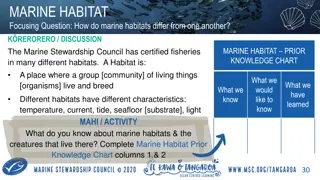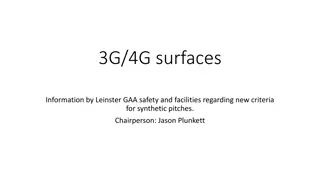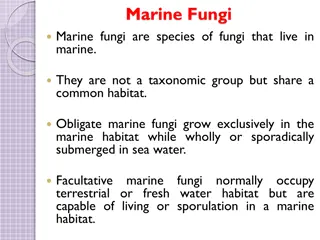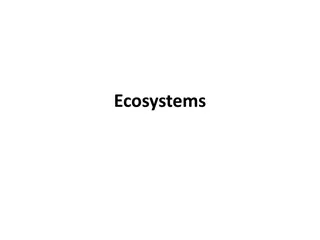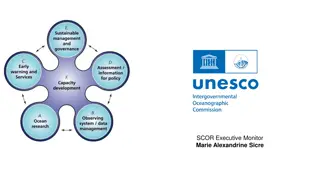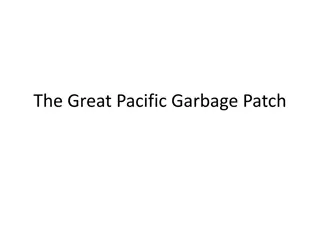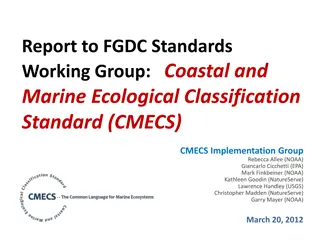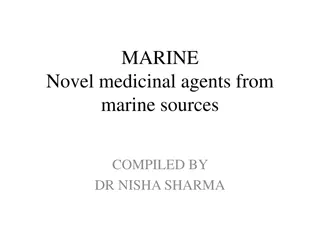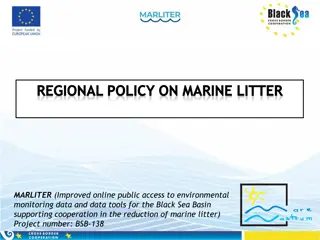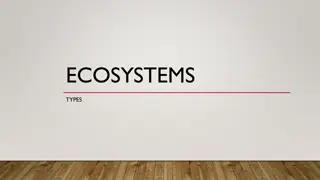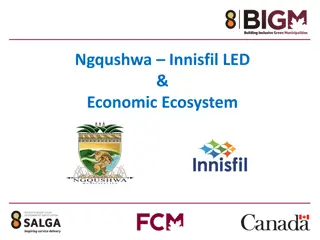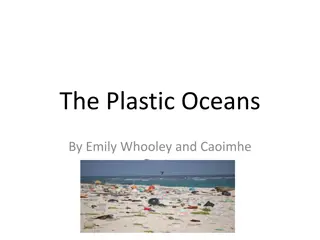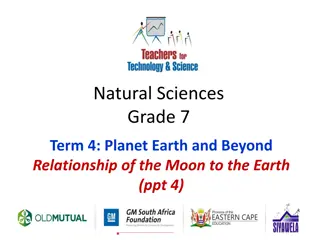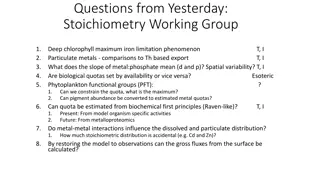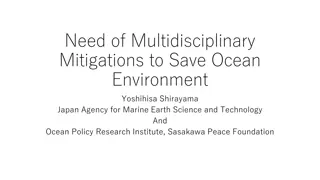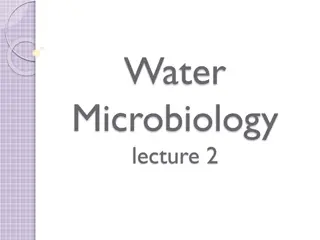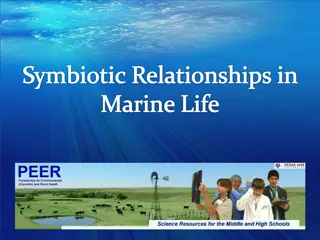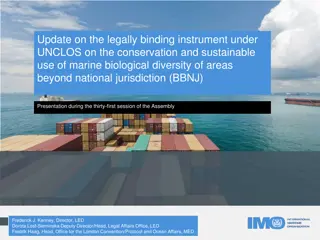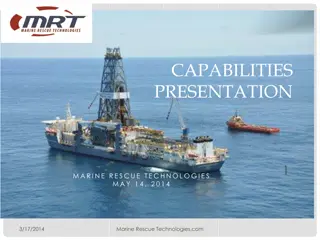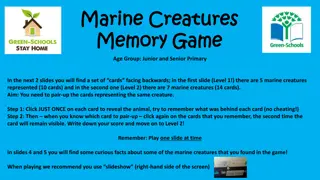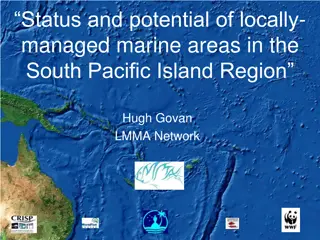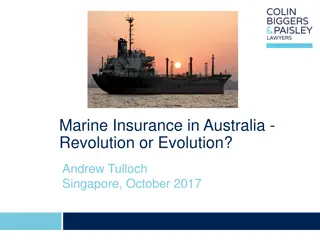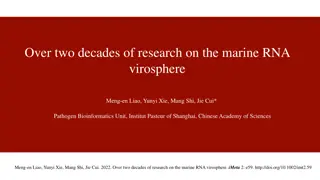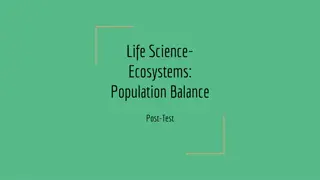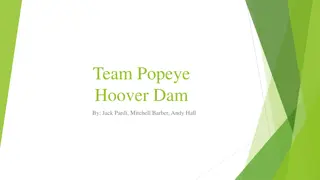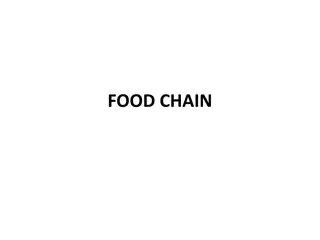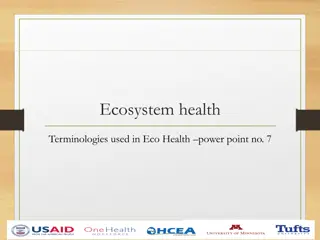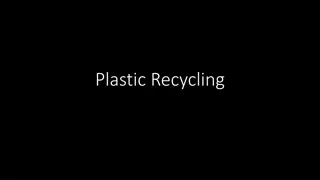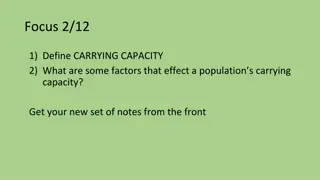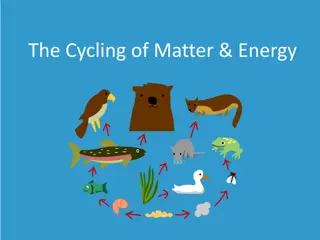Understanding Microplastics: Impact on Marine Ecosystems
Microplastics are tiny plastic particles less than 5mm in diameter that pollute marine environments. These particles, including nanoplastics, can have significant impacts on ecosystems and organisms, although research on their effects is ongoing. Microplastics are generated from various sources, both primary and secondary, and can enter the food web through ingestion by marine animals, leading to bioaccumulation and potential harm to the food chain.
Download Presentation

Please find below an Image/Link to download the presentation.
The content on the website is provided AS IS for your information and personal use only. It may not be sold, licensed, or shared on other websites without obtaining consent from the author. Download presentation by click this link. If you encounter any issues during the download, it is possible that the publisher has removed the file from their server.
E N D
Presentation Transcript
What are microplastics? Microplastics are plastic items with a diameter of less than 5 mm. Microplastic pollution occurs everywhere in the marine environment. The chemical reactions in which microparticles take part and how these particles affect organisms is still under study. Research about the effects of nanoparticles, smaller than 1 m, is also ongoing. Microplastics and nanoplastics may have potential impacts on ecosystems.
Microparticles: less than 5 mm large: 1 5 mm small: less than 1 mm Nanomaterial: particle aggregate or agglomerate with size range 1 100 nm (1 nm = 10-9m or one millionth of a millimetre) Ingested by invertebrates and filter feeders
How microplastics are generated Sources of microplastic particles Primary: made on purpose cosmetic products abrasive media for cleaning applications Secondary: variety of sources accidental release of primary plastics industrial waste and by-products wear and tear of plastic products during normal use (textiles, paints, car tyres, etc.) particles and fibres
How plastics enter the food web Swallowed by fish, mammals, birds, other sea animals Microplastics are similar in size to sediment and suspended particulate matter Filter feeding or sediment ingesting organisms ingest small plastic particles Some particles may not be excreted and remain in the digestive system of individual animals When an animal with microplastics in its body is eaten by a predator the microparticles travel up the food web
Plastic bioaccumulation in the food web Zooplankton and other invertebrates ingest plastic particles and fibres Zooplankton usually excrete the particles within hours but microplastics may remain in the organism for up to seven days in laboratory conditions Ingestion of polystyrene particles by zooplankton significantly decreases their nutritional intake, since plastic provides zero energy, and may affect how these organisms deal with food shortages Microplastics affect also reproduction Zooplankton is at the base of the food web, so higher levels of consumers accumulate larger amounts of plastics
Microplastics are ingested by zooplankton. Zooplankton is the main food for smaller fish, eaten themselves by larger fish and marine mammals. Bigger amounts of plastic particles may be found at the top of the food web.
How microplastics could end up on a consumer's plate The risk of exposure of humans to microplastics and chemicals adhering to them is still studied The consumption of fish is considered low-risk as the internal organs of fish are usually taken away during fish cleaning Sea organisms consumed with their internal organs may have microplastics in them The amount of hazardous chemicals attached to plastic particles is at present considered minor in comparison to other exposure pathways, such as consumption of fruits and vegetables treated with herbicides and atmospheric pollution
Summary Microplastics and nanoparticles enter the marine environment and are constantly transported by natural processes They may affect the ecosystems There is a risk of bioaccumulation of microplastics in the food web Seafood is posing a low risk from plastic pollution to humans at present but the issue is under study
Credits All figures in this presentation are produced by Maphoto/Riccardo Pravettoni, 2016 & 2018 and are part of the collection Marine Litter Vital Graphics of GRID-Arendal, available at: https://www.grida.no/resources/6933 The images are licenced under CC BY-NC-SA 2.0.
Joint Operational Programme Black Sea Basin 20142020 The publication is edited by the Black Sea NGO Network Varna, November 2020 Joint Operational Programme Black Sea Basin 2014 2020 is co- financed by the European Union through the European Neighbourhood Instrument and by the participating countries: Armenia, Bulgaria, Georgia, Greece, Republic of Moldova, Romania, Turkey and Ukraine This publication has been produced with the financial assistance of the European Union. The contents of this publication are the sole responsibility of the Black Sea NGO Network and can in no way be taken to reflect the views of the European Union


